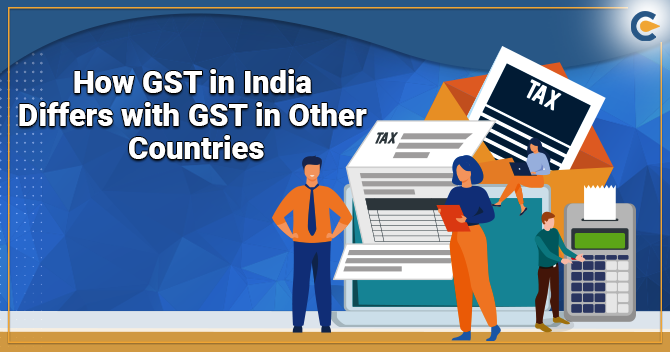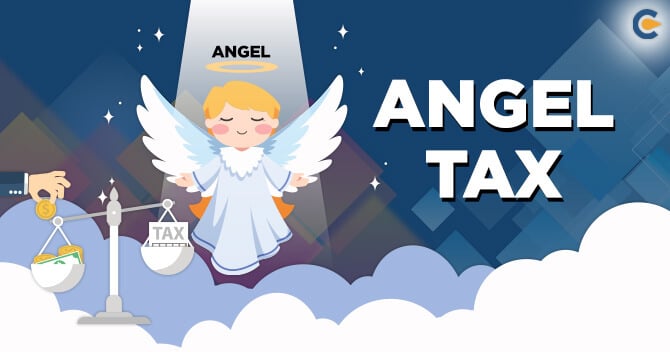GST in India is always a hot topic to discuss and if we talk about its comparison with other countries it becomes hotter. Today in this article we will discuss the GST in India vs GST in other Countries. But, let just put some light on the history of the GST.
Brief History of GST-
So, the concept of the GST is first introduced in France in 1950s by a French tax official. After that, many other countries adopted GST in the same way but some accepted it in VAT i.e. Value Added Tax form. Today, more than 160 nations including the European Union and Asian countries are practicing this form of taxation. Moreover, Countries like Sri Lanka, Singapore, and China also sharing the hand in the practice.
On a rough note, 90% of the world’s population live in countries with VAT or GST as the taxation system. The GST council[1] finalized the tax rates on 80-90% of the goods and services under the 4 slab structure keeping essential items of daily use in the lowest bracket of 5%. India, unfortunately, came into this system quite late.
Therefore, the table shows some of the tax rates around the world who have implemented GST or VAT.
| Year | Country | Rate |
| 1980 | China | 17.00% |
| 1985 | Indonesia | 10% |
| 1985 | New Zealand | 12.50% |
| 1991 | Thailand | 7.00% |
| 1994 | Singapore | 5.00% |
| 1994 | United Kingdom | 17.50% |
| 1996 | Philippines | 10.00% |
| 2000 | Australia | 10.00% |
| 2005 | India | 12.50% |
Introduction of GST in India
The GST is a kind of sales tax levied on the consumption of goods or services. It has replaces around 16 tax levies- 7 central taxes like excise duty and service tax and 9 states tax like value-added tax and entertainment tax binding India as one market with one tax rate.
GST was a Game changer in the market and if we compare the efficiency gains under VAT with the GST then it has given the higher tax buoyancy and an improvement in government finance over the medium term.
GST was first introduced in 1985, by Vishwanath Pratap Singh and it was rolled out in 1999, 2002, 2005, 2011 and in 2017 it was finally introduced. On 7 July 2017, the entire nation got the news of the implemented taxation system called the GST i.e. Goods and Service Tax. The GST council has set the tax rates for goods and services under 5 brackets of 0%, 5%, 12%, 18% and 28%.
What is GST Registration in India?
GST Registration is applicable if the supply turnover of all Indian service providers, including all sorts of freelancers as well as traders and manufacturers crosses Rs.20 lakh, since 1st April 2017.
Why GST is implemented in India?
- To find the mode of efficient tax collection
- Ease in Interstate and intrastate movement of goods and services
- Reduction in Corruption
- To reduce the tax evasion
What is the Difference between GST in India vs GST in other Countries?
One of the major differences between GST in India and GST in other countries is that in India GST is charged under two Government authorities as because India is a federal country with both the Centre and the State wherein both has the authority to charge and collect taxes in accordance with the appropriate legislation. Both the Central and State Government has different responsibilities to perform according to their own power as has been prescribed in the Constitution. The three taxes applicable under the GST are:
- CGST – Tax collected by Central Government on intra-state sale.
- SGST– Tax collected by State Government on intra-state sale.
- IGST – Tax collected by State Government on inter-state sale.
Given below are the applicable GST Rates in different countries:
| Countries | Applicable GST Rates |
| Australia | 10 |
| Brazil | 10 |
| Canda | 5 |
| china | 17 |
| France | 20 |
| Germany | 19 |
| India | 18 |
| Indonesia | 10 |
| Japan | 8 |
| Jersey | 5 |
| Korea | 10 |
| Malaysia | 6 |
| Mexico | 16 |
| Netherlands | 21 |
| New Zealand | 15 |
| Pakistan | 17 |
| Russia | 18 |
| Singapore | 7 |
| Switzerland | 8 |
| Thailand | 7 |
| United Kingdom | 20 |
- There are two main segments of GST in India i.e. CGST and IGST. Other countries have an integrated GST system.
- Not likely other countries, India has not the same rate of GST.
Read our article:Cancellation of GST Registration in India: Full guide
| Particular | India (proposed) | Canada | U.K | Singapore | Malaysia |
| Name of the GST | Goods and Service tax | Federal Goods and Service Tax % Harmonized Sales Tax | Value Added Tax | Goods and Service Tax | Goods and Service Tax |
| Standard Rate | 0% (for food staples), 5%,12%, 18% and 28%+ cess for luxury items | GST 5% and HST varies from 0% to 15% | 20% reduced rates- 5%, exempt , zero-rated | 7% Reduced Rates – Zero rated, exempt | 6% |
| Threshold Exemption Limit | 20 lakhs and 10 lakhs for North Region Area | Canadian $ 30,000 which is approximately 15.6 lakhs in INR | Approximately Rs 61.32 lakhs | Singapore is approximately Rs 4.8 crores | Approximately 75lakhs |
| Liability arises on | Accrual Basis: Issue of Invoice or Receipt of Payment- earlier | Accrual Basis – the date of issue of invoice or the date of the receipt of payment – earlier. | Accrual Basis: Invoice or payment or supply – earliest Cash Basis- Payment | Accrual Basis: Issue of Invoice or receipt of payment or supply on a Cash Basis | Accrual Basis- Delivery of goods or use of invoice or receipt of payment |
| Returns and Payment | Monthly and one annual return | Monthly, quarterly or annually based on the turnover | Usually quarterly, small business option- annual | Usually quarterly Business Option- Monthly returns. | Large organisation- Monthly |
| Reverse Charge Mechanism | Apply on goods and services | Reverse charge applies to importation of services and intangible properties | Applicable | Reverse Charge applies to the supply of services | Reverse charge applies to imported services |
| Exempt Services | Manufacturer of exempted goods or Provision of exempted services | Real estate, Finacial Services, Rent, charities, Health, Education | Medical, Education, Finance, Postal Services, Insurance | Real Estate, Financial Services or Residential Rental | Basic Food, transportation, health, Residential Property, Agricultural Land |
- India taxation system is loaded with rules and regulations for the implementation of GST. Whereas, GST structures of other countries like Canada, New Zealand is quite simple and easy to understand.
- Procedure for filing the tax and paying amount is complex than the rest of the countries.
- “Sin Tax” is implemented in rare situations.
- GST is a uniform structure but with little complication and confusion than any other countries.
GST in India vs GST in other Countries
Now, coming to the detailed explanation of the Countries,
GST in India vs GST in New Zealand
GST in New Zealand was the first to come into light in 1986 at a rate of 10%. However, the rates are changed twice in the year 1989 with 12.5% and 15% in 2010 to generate higher revenue while removing distortions in the tax structure.
Moreover, this change led to the adoption of GST at a single rate including food in the GST base at the full rate. Hence, such broad-based the tax net and also reduced both compliance and administrative costs. Presently, the country is getting the highest tax productive nations among the OECD countries.
GST in India vs GST in Canada
Talking about the Canada GST system, it was a multi-level VAT in 1991 on the supplies of goods and services purchased in the country. The GST includes almost all the products in it excluding certain essentials like groceries, residential rent, and medical service.
Furthermore, the bill once gets implemented then it will be led to new processing operations and techniques to verify the accuracy of the return submitted by small entrepreneurs. However, Canada imposes its own sales tax besides GST.
The GST rate in Canada is 5% on the supplies of goods and services and in some province, there is a harmonized sales tax at 15%.
GST in India vs GST in Singapore
The country introduced the GST bill in April 1994 at a tax rate of 3%. The intention was to make the public acceptance to the public and to minimize inflation. The government swore to the public not to raise the tax for the next 5 years that came in as an important decision in reviving consumer spending. With Effect from 2007, the GST rates have been increased to 7% that still very less compared to GST rates of India.
GST in India vs GST in Indonesia
Now, in Indonesia imports are usually subject to VAT and GST, but most of the exports are exempted from the list of it. The tax rate in Indonesia is 10% if the services are supplied outside the parameters of Indonesia, in some cases, the certain item is taxed at 20% with a cap of 35%.
Moving forward to the luxury items the tax rate is applicable to the import around 10% to 50%. Most of the items like gold, mining products, arts and entertainment, education, insurance, parking or public transport, labor, medical health, food, and beverage served in hotels are not subject to pay any VAT.
GST in India vs GST in China
While we talk about GST in China, then maybe we can make a guess, why China is a good player in the market. GST in China is charging tax rates at 0%, 5% and 19%.
GST in India vs GST in Australia
In Australia, the GST is a federal tax collected by the supreme authority and then divided further among the states without any battle of words at the time of a process. The GST was introduced in 2000 with the tax rate of Rs 10% which is still constant at today date.
GST in India vs GST in the USA
We all know the US is a federal republic country where taxes are collected at a separate level from the federal, state or local government. In the US, the federal tax rates are between 10% and 39.6% of taxable income. The state or local government is charging tax from 0% to 13.30% of the total taxable income.
GST in India vs GST in U.K
There are three tax rates i.e. 0%, 5% and 20% applicable to goods and services. Most of the goods are covered under 20% tax rates. The VAT on the stamps postage, financial property transactions, food and children’s clothes are exempted items.
GST in India vs GST in Brazil
The most independent and carefree GST system as compared to other is GST in Brazil. It has divided rules of taxes between the states and the center. Brazil has 6 tax slabs which are as follows- 0%, 1.65%, 2%.7%, 12% and 17%.
GST in India vs GST in France
The country who introduced the GST is France. The GST has been firstly implemented in France in 1954 with 4 tax rate slabs. The rates in this county are chargeable in the slab rates of 2.1%, 5.5%, 10%, and 20%. Among the Tax rates, 20% is the standard rate applicable to most of the goods in France.
GST in India vs GST in Ukraine
GST in Ukraine, a standard rate of tax is applied at 20% and the VAT value is added to the cost of goods and services price. There are some of the supplies that are also subject to the lower rates under 0% and 7%.
Usually, GST at 7% rate is applicable to pharmaceuticals products, medicines, and medical equipment whereas % VAT is on the export of goods and services.
GST in India vs GST Malaysia
GST was implemented in Malaysia with effect from 1 April 2015 with the consistent rate of 6%. Here, Sales tax and service tax are categorized by different tax rates which are 10% and 6% respectively. Some of the items like piped water, the first 200 units of electricity per month, transportation services, and highway toll and health service are exempted from taxation.
The reason behind the dual GST model in India
After the US, India is also a federal country where both the center and the states have assigned the power to levy and collect the taxes through appropriate legislation. The Dual GST model consists of Central Goods and Service tax (CGST) and State Goods and Services Tax (SGST) rates.
In India, both the center and State are assigned with the power to levy and collect tax through appropriate legislation. Moreover, the center and state government have different roles and responsibilities to perform seeing the division of power prescribed. A dual GST has therefore aligned with the constitutional requirement o9f fiscal federalism.
The success of the Implication of GST in India
Following are the circumstances where GST have been proved to be a successful decision-
- No Rise of Inflation –It was assumed that GST would cause high inflation in a market as with many countries have witnessed it. But, it doesn’t happen unfortunately in India. The anti-profiteering authority helped enough to ensure that businesses did not get abuse the transition.
- Single National Market – With the dismantled of the check post, the long queue of the truck at state border is lost to sight creating a seamless national market. The long queue had restricted the movement and leading to huge delays and increasing transaction costs for the logistics sector.
- Uniform Tax – A consumer in Karnataka will pay the same tax on an item as one in Delhi. GST has allowed the businesses to follow the distribution system- production, supply chain, storage. The system helps to make them more efficient keeping state tax I mind.
- Increase number in Registration – Comparing with the old indirect tax regime there is a steep increase in the registration under the GST regime. The survey state that Registration under old indirect tax regime is around 6.4 million and in GST it crosses 11.2million.
- Filing Tax Return – The number of income tax return filing has been increased from last year. The amount of tax return filing in F.Y in 2017 is around 5.43cr where it is calculated 6.84cr in F.Y.
- Easy GST Return file- The biggest reason for the success of GST in India is its simplification. The government from time to time takes initiatives to make it more easy and reliable for a customer.
Impact of GST in India
- Complex Compliances- Complex compliances make GST more difficult to share. The information technology glitches take more time than the anticipated time to resolve any problem. A new GST return filing form is being crafted to help and make the process much less complex for businesses and even the customer also.
- Fear of multiple audits and assessment – Multiple registrations have complicated the industry. In many circumstances, registrations are required in all states. Companies may feel the fear of multiple audit and assessments cause due to multiple registrations.
- Cess on SIN goods – Undoubtedly, GST has scrapped a multiplicity of taxes and cess but it also has introduced a new levy in the form of compensation cess on luxury and sin goods. This will later be expanded to cover automobiles.
Conclusion
Eventually, in all cases GST rates are charged between 16 to 20% and India has somewhere takes the tips from this and put down in a similar pattern. Also, the expected Indian Economy growth with the GDP has a great pace as the speculated taxpaying community is likely to get a growth of 5 to 6 times than the current economy in the coming years.
Read our article:How To Obtain GST Registration in India?













